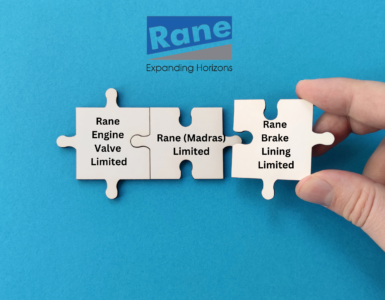With changing demographic profile of India, rapid urbanisation, spread of digital payments and increasing purchasing power, the retail sector is poised for a quantum leap. India is becoming one of the largest preferred retail destinations globally. The early indications are showing up now. In 2018, the retail sector received a record level of foreign direct investment (FDI) as a host of international companies have invested in India through mergers and acquisitions. Partnerships and acquisitions will gain traction as more players look to gain access to new capabilities in this space.
Over the last two decades, the Indian retail industry has seen significant changes, evolving rapidly from traditional shops to large multi-format stores offering a global experience. The rapidly changing dynamics resulted in unprecedented growth in overall consumption with numbers suggesting that consumer expenditure in India is expected to almost double to $3,600 billion by 2020 from $1,824 billion in 2017.
In 2018, the value of all M&As in the retail and consumer sector was $27 billion, which is a 700% jump from $3.4 billion worth of transactions in 2017, according to data from EY India. The biggest deal was Walmart, the world’s largest retailer, acquiring 77% stake in India’s leading e-commerce market place Flipkart for $16 billion. Similarly, global e-commerce giant Amazon has made its presence in India more powerful by investing in offline formats such as K Raheja promoted Shopper Stop. Also, Amazon India along with Samara Capital bought out Aditya Birla’s retail chain More for Rs 4,200 crore.
Even modern home-grown retailer Kishore Biyani has announced his retail 2.0 ambition, which was all about empowering has chain of physical stores with technology. Chinese retail major, Alibaba had shown keen interest to enter the Indian retail space. With the rising need for consumer goods in different sectors including consumer electronics and home appliances, many companies have invested in the Indian retail space in the past few months. Data from Confederation of Indian Industry (CII) show that by 2021 traditional retail will hold a major share of 75%, organised retail share will reach 18% and e-commerce retail share will reach 7% of the total retail market.
Making clear his ambitious plan to take on Amazon.com Inc. and Walmart Inc.’s Flipkart on its home turf Reliance Industries will soon roll out an online shopping platform to 1.2 million retailers and store-owners in Gujarat. In fact, he wants to take on the world’s largest retailers by combining his Jio telecom service, mobile devices and a vast physical retail network.
Fast-growing Jio currently has 280 million subscribers, while Ambani’s retail arm operates nearly 10,000 outlets across more than 6,500 Indian cities and towns. They will team up to bring merchants aboard through Jio’s apps and devices. Ambani has been gradually revealing details of his plans in e-commerce. In July, he said his platform would use augmented reality, holographs and virtual reality to create an “immersive shopping experience.”
Industry on the go
The Indian retail industry is one of the most dynamic and fast-paced industries. India is the world’s fifth-largest global destination in the retail space. At present, retail sector is estimated to be around $700 billion and would grow in double digits for the next few years. Both online and brick-and mortar formats can continue together as the retail companies will try to reach out to consumers both through physical stores as well as online.
According to a CII-IBEF report, the total consumption expenditure in the country is expected to reach nearly US$ 3,600 billion by 2020 from US$ 1,824 billion in 2017. It accounts for over 10% of the country’s gross domestic product (GDP) and around 8% of the employment. The country’s retail market is expected to increase by 60% to reach US$ 1.1 trillion by 2020, on the back of host of factors – prominent ones being rising incomes and lifestyle changes by middle class and increasing reach of goods in the hinterlands.
Online retail sales, too are likely to grow at 31% year-on-year to reach US$ 32.70 billion in 2018. India is expected to become the world’s fastest growing e-commerce market, driven by robust investment in the sector and rapid increase in the number of internet users. Various agencies have high expectations about growth of Indian e-commerce markets. Moreover, the luxury market in the country is likely to grow to US$35 billion by the end of 2019 from US $23.8 billion in 2017 supported by growing exposure of international brands amongst Indian youth and higher purchasing power of the upper class in Tier 2 and 3 cities.
The government, too has taken many steps to push growth of the retail industry. It had allowed 100% FDI in online retail of goods and services through the automatic route. It provided a lot of clarity on the existing businesses of e-commerce companies operating in India. Furthermore, liberalisation in FDI policies by the Centre has repositioned the Indian retail sector on the global map, attracting a large number of global retailers into the country further fuelling growth of organised retail in the country. Going ahead, the government may change the FDI rules in food processing, in a bid to permit e-commerce companies and foreign retailers to sell Made in India consumer products.
The introduction of the Goods and Service Tax (GST) as a single unified tax system in July 2017 was another major policy overhaul that is attracting foreign players. The government’s move to provide a single-policy framework for retail, FMCG and e-commerce in order to offer a level playing field to stakeholders is another step in the right direction.
Walmart-Flipkart deal
The Flipkart buyout will transform Walmart’s position in the country with over 1.3 billion people. Moreover, India remains the fastest growing economy in the world, there is a sizeable aspiring middle class with wide usage of smart phones and other modern digital means. The US-based Walmart has said it had completed its $16-billion acquisition of India’s largest e-commerce firm Flipkart.
In May, Walmart said it would acquire 77% of Flipkart for $16 billion, valuing India’s most valuable consumer internet start-up at $21 billion. The buyout, which is Walmart’s biggest acquisition and the biggest e-commerce deal globally, marked the end of an era for Flipkart as co-founder and chairman Sachin Bansal left the company, selling his 5.5-6% stake for roughly $1 billion.
Walmart has said that its plans for India will include investments that support national initiatives, create jobs, support small businesses, farmers and supply chain development. Flipkart’s business could also get a whole lot more transparent since its quarterly results will be reported as part of Walmart’s earnings. Although they will be part of its international business so that might provide some protection from direct scrutiny.
However, Flipkart’s discounting practices will have to be dealt with separately, an issue that assumes significance because of the new e-commerce policy that restricts on discounting by online marketplaces.
Tighter norms for e-commerce
Given the increasing reach of digital medium and smartphones, e-commerce is expanding steadily in the country. Customers have the ever increasing choice of products at the lowest rates. E-commerce is probably creating the biggest revolution in the retail industry, and this trend would continue for years in the future. Data from CII suggest that India’s e-commerce industry is projected to reach US $53 billion by 2019. Retailers are leveraging the digital retail channels (e-commerce), which would enable them to spend less money on real estate while reaching out to more customers even in smaller towns.
The government has now tightened the norms for e-commerce companies offering discounts. As a result, online retailers cannot use their foreign capital to fund high discounts. The government has also underlined that e-commerce entities which operate a marketplace model will not be allowed to exercise ownership or control over inventory. Any ownership or control over the inventory will convert the business into an inventory-based model. The new rules, which were issued in December last year and is implemented from February, also says that the inventory of a vendor will be deemed to be controlled by an e-commerce marketplace entity if more than 25% of the vendor’s purchases are made through the marketplace or its group entities.
So, under the new norms, online marketplaces such as Amazon, Flipkart and Paytm, which are funded by foreign direct investments cannot exercise any control over the vendors or pricing strategy. The rules are expected to affect the operations of both Amazon and Walmart, which acquired Flipkart Online Services Pvt in a $16 billion deal. They’re expected to benefit local enterprises such as Reliance.it was expected that revised rules will be extended but no extension was given and it is made effective from 1st February 2019
According to experts, leading online players have invested in companies that procure goods in bulk from companies and sell them to their preferred vendors, which in turn list the same products at cheap prices. Marketplaces are meant for genuine and independent sellers and many of them are small and medium entrepreneurs. The new norms will help them leverage the reach of e-commerce. The policy also mandates that no seller can sell its products exclusively on any marketplace platform and that all vendors on the e-commerce platform should be provided services in a fair and non-discriminatory.
Amazon.com Inc buying More
Amazon.com Inc and Indian private equity firm Samara Capital have bought Aditya Birla Group’s food and grocery retail chain ‘More’ for an enterprise value of around Rs 4,200 crore. More is the country’s fourth largest retail chain after Future Group’s Big Bazaar, Reliance Retail and Dmart. The board of Aditya Birla Retail (ABRL) approval the deal as per which private equity fund Samara Capital acquired the majority 51% in ABRL, while Amazon’s investment arm, Amazon.com NV Investment Holdings, bought the balance 49%.
The deal follows the country’s FDI rules where 51% FDI is allowed in multi-brand retail while 100% FDI is allowed in cash-and-carry ventures. The deal will help ABRL clear its debt of around Rs 4,000 crore as on March 2018. With the acquisition, the new owners of More will expand its chain which had got stalled due to the company’s high debt. It is likely that 100-150 stores will be set up every year. Currently, More has 575 stores.
Given the changing scenario of Indian retail industry and growth opportunities, domestic and foreign companies will look for acquisitions to expand





Add comment